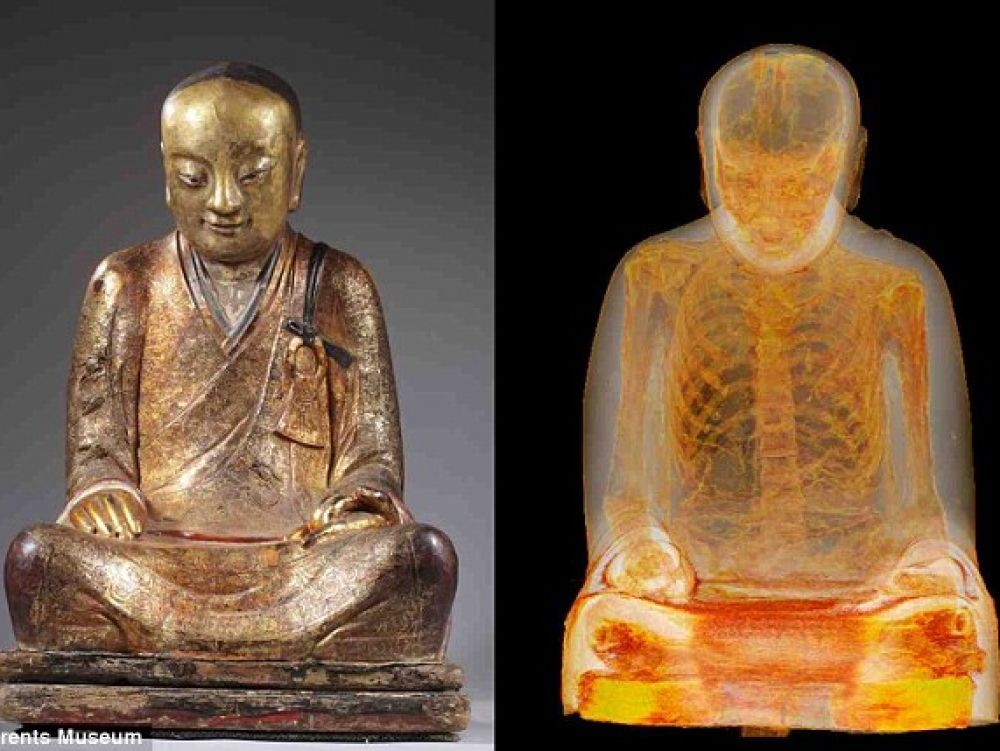In July 2017, the Dutch justice will decide in the case of the "monk in the statue", and will finally decide on its attribution.

In July 2017, the Dutch justice will decide in the case of the "monk in the statue", and will finally decide on its attribution.
His discovery stunned specialists in September 2014, when a CT scan carried out in Rotterdam (Netherlands) during a restoration operation on an 11th-12th century Buddhist statue revealed that it contained… the remains of 'a mummified monk (Sciences et Avenir, edition n°819) . Three years later, it is before the Dutch justice that this archaeological treasure reappears, the judges having to decide to decide on its attribution on July 14, 2017, a Chinese community claiming the restitution.
A presence explained by the ritual practice of automummification
The human remains found inside this Song Chinese statue (960-1127) were found to be that of Zhang Gong Liuqian , a famous Buddhist master, as evidenced by a text found inside the statue. Its unusual presence is explained by the spectacular ritual practice of automummification, followed in the greatest secrecy mainly between the 5th and 15th centuries by a handful of monks. (It consisted of a ritual mummification by intense food fasts followed for several years, to become almost only skin and bones).
A dark mummy case stolen in 1995 that resurfaces 10 years later
It is on the occasion of the presentation of this statue as part of the exhibition Mummy World at the National Museum of Natural History in Budapest (Hungary) in 2015 – where Sciences et Avenir had gone – that trouble began for its owner, the Dutch architect designer Oscar van Overeem. Alerted, the inhabitants of the village of Yangshun, in the province of Fujian, in the south-east of China, indeed believed to recognize in this statue exposed that of their adored monk, stolen in December 1995. They then entrusted the case to a group of Chinese lawyers led by Liu Yang, a specialist in antiquities recovery, as reported by the Financial Review of June 2, 2017. In fact, on July 14, 2017, this lawyer will try to demonstrate before a Dutch court that the statue that disappeared from the village of Yanchun is indeed the one that ended up in the Dutch workshops of Carel Kools, the restorer who created the to scan. Facts that Benny Rustenburg, the antique dealer from whom Oscar van Overeem bought the statue, says he ignored. According to this collector based in Asia, it was acquired by him in Hong Kong in 1995.
An object whose value reaches several million dollars
The issue of this strange affair around the possession of this "object of art" - whose value now reaches several million dollars - has also produced collateral damage on China - Netherlands relations. For several years, Beijing has been trying to recover its looted objects, like those that disappeared during the Sack of the Summer Palace by the Anglo-French troops in Beijing in 1860, or those sold abroad following the the collapse of the Qing in 1911. After the countless destructions of heritage committed by the Red Guards during the Cultural Revolution (1966-1976), the protection of Chinese heritage has become a national priority as President XI Jinping recalled in 2014 . Dutch justice should reserve its decision.
